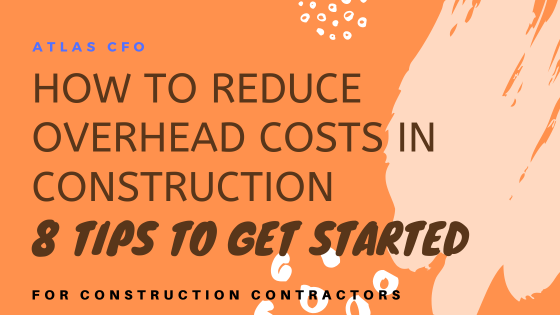Running a successful construction business requires a careful balance between revenue generation and cost control. One area of worry for many construction companies is overhead costs. By implementing effective cost-measuring and cost-cutting strategies, construction business owners can enhance profitability and strengthen their financial health.
One caveat: Most construction companies do not “save” their way into profit. When looking at overhead costs, remember that many costs are necessary for the success of the business. Additionally, overhead costs are not project costs. Typically, construction contractors get more bang for their buck focusing on job performance improvement, however, there are some practical steps you can take to right-size overhead costs and maximize your company’s performance.
- Organize Your Expenses:
To start, take a close look at your business operations and identify and separate job costs from overhead costs. These costs should be separated by the gross profit line on your income statement. Once these costs are organized you can analyze.
- Analyze Your Overhead Expenses:
Now that your overhead costs are organized and not co-mingled with job costs, you can look at trends. A monthly trend report works great to analyze overhead expenses. This report allows you to see each month and each expense. If available, review this report over the last 3 years to see the items that have changed the most and give insight as to opportunities.
- Evaluate Staffing Needs:
Take a critical look at your current staffing levels and evaluate whether any adjustments can be made. Proper workforce planning ensures that you have the right personnel for each project without incurring unnecessary expenses. Staffing changes tends to have the biggest impact on overhead costs. However, this is a double-edged sword though as you need enough staff to manage the work and company. Reviewing revenue and gross profit per project manager and revenue per office staff can help give you insights as to the level of resources you require to deliver to your customers.
- Consider Bonus Structures:
Sometimes employees consider bonuses part of their annual pay and not a benefit or reward tied to company results. When reviewing overhead expenses, consider whether there are any opportunities to rework your bonus structure to be a reward, not a right.
- Negotiate With Suppliers:
If you don’t ASK you don’t GET. Are you on the best price list? Are there different tiers of services?
- Technology:
Review and invest in software and technology that can automate tasks, streamline communication and improve job productivity. Automation can reduce the need for manual labor. (See #3)
- Consider Outsourcing, Remote Work and Flexible Work:
With the availability of connectivity to the office, some roles (like admin, accounting, etc.) can be done through outsourcing, remote or flexible work. These opportunities can cut costs, reduce office space needs and improve employee satisfaction.
- Regular Financial Analysis:
Maintain stringent financial record-keeping practices and regularly analyze your financial statements. By having a clear understanding of your income, expenses, and cash flow patterns, you can identify areas where overhead costs can be reduced. Consider engaging the services of a financial professional or a virtual CFO to gain expert insights into improving financial management.
Conclusion:
Reducing overhead costs is a vital step in enhancing the profitability and financial health of your construction business. Effective cost control is an ongoing process that requires consistent review and adjustment. With a focused approach, you’ll be well on your way to optimizing your construction business’s financial performance.

